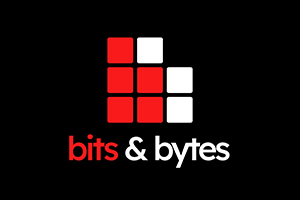Making Your Site Web Accessible
Bits & Bytes Recap
 In our recent forum, we discussed essential accessibility requirements that all government institutions must adhere to, specifically focusing on WCAG 2.1
AA standards. Here’s a summary of the points we covered:
In our recent forum, we discussed essential accessibility requirements that all government institutions must adhere to, specifically focusing on WCAG 2.1
AA standards. Here’s a summary of the points we covered:
Page Headings
Headings serve as an outline for web pages and function like a table of contents. They assist users in scanning content, navigating with screen readers, and help search engines determine page relevance.
Guidelines:
- Limit to one h1 per page, summarizing the overall content.
- Use descriptive and properly structured headings.
- Avoid common pitfalls such as:
- Missing first-level headings
- Empty or incorrect headings
- Illogical heading order (h1 → h2 → h4)
- Should be chronological, but can reset per section (First section - h2, h3, h4; second section -h3, h4, h5)
For more details, visit WebAIM Headings Techniques.
Color Contrast
Color contrast is crucial for readability. The minimum contrast ratio for Level AA compliance is 4.5:1. Important considerations include:
- Ensure text in images meets the same contrast ratio
- Some university accent colors may require adjustments to meet contrast standards
- Use tools like WebAIM’s Color Contrast Checker to verify compliance
Images
Alternative text (alt text) is vital for non-text content. It helps screen readers convey the purpose of images. Best practices for alt text include:
- Be accurate and succinct
- Avoid redundancy and phrases like “image of”
- Mark decorative images appropriately
For further guidance, refer to WebAIM Alt Text Techniques.
Links
Links are promises to users that the button, text, or image they select will take them to what the link text says. The WCAG criteria for link text is that “the purpose of each link can be determined from the link text alone.” Links should clearly indicate their purpose. Key points include:
- Use concise and informative link text
- Avoid vague phrases like “click here”, “read more”, “learn more”
- Ensure links are not empty and provide context if linking to documents
Learn more at WebAIM Link Text Techniques.
Electronic Documents
All linked electronic documents (.doc, .ppt, .pdf, .xls) and HTML pages must comply with web accessibility standards, with a compliance deadline set for April 24, 2026. The exception to this rule is archived content. Archived content is:
- Created before compliance deadline
- Only for reference, research, or recordkeeping purposes
- Held in a section specifically for archived content (recommendations coming)
- Has not been updated or changed since being archived
Our recommendations to make electronic documents accessible is to convert them to HTML pages. If this is not possible, edit the original document to meet compliance requirements.
For more information, check the ADA Title II Web Accessibility Fact Sheet or the New DOJ Requirements U Webmaster Resources blog post.
Page Checks
Utilize tools like the Modern Campus Publish checks and WAVE to help with compliance. Remember:
- While automated checks are helpful, they can still miss hidden content; manual checks are essential.
- Accessibility violations are categorized into four degrees:
- Critical
- Serious
- Moderate
- Minor
Modern Campus Publish Checks can be run every time a page is published. Once the publish pop-up appears, select the blue "Run all Checks" in the top right corner. Make sure to check any errors that appear and fix where possible. More about these publish checks can be found on the Modern Campus Accessibility Check webpage. If you are unable to fix a error or have questions, reach out to the Web Support and Usability team.
WAVE is a great tool to help check for compliance page-by-page and shows many violations including all that we have previously mentioned. The WAVE browser extension can be downloaded to help you while auditing your sites.
Sometimes, automated checkers can uncover different issues. It is recommended to perform different checks on each page as well as a final manual check.
Q & A
Q: What are accessibility requirements with tables?
A: For screen readers to work effectively with tables, the column headers should be marked accordingly. If column headers are not marked or are empty, the information within the table can be confusing to understand for those who use assistive technology. Header cells for columns and rows must be marked up with <th>, and data cells with <td>. A guide on how to edit column headers can found in step 5 of our Beyond the Basics Tables Walkthrough. More information about tables including requirements and examples can be found on WebAIM’s Creating Accessible Tables.
Q: If we use a third-party product, who is responsible to make it accessible?
A: Your department, college, or entity is responsible for ensuring the accessibility of its web content and services, including those delivered through third-party products. If you are going to use (or currently use) a product on your web application, verify it meets the WCAG 2.1 AA requirements to avoid legal responsibility (even those who have gone through the RFP process). If you have any questions about whether or not a product meets accessibility requirements, contact the company.
Wrap up
Thank you to all participants for engaging in this discussion on accessibility. Your contributions are invaluable for fostering a collaborative effort as we work together to enhance our digital environments!
If you have any further questions or suggestions, feel free to reach out to the UIT Web Support & Usability team.
